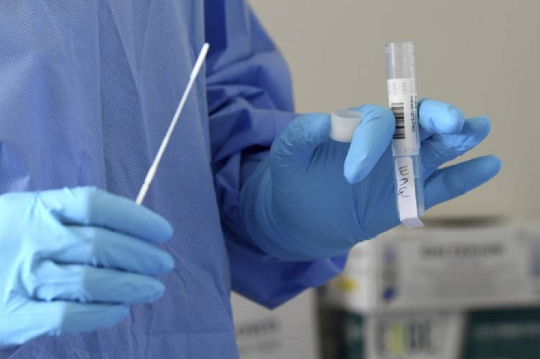The elusive vaccine
Vijay Prashad | 07 November 2020
After months of underplaying the disease and misleading the public about basic methods to prevent its spread, Donald Trump was infected with the coronavirus. Disregarding medical advice, he once more said that the disease is insignificant, taking off his mask to attend public events despite being contagious. He knew — based on an interview given to Bob Woodward in February — that the virus is “deadly stuff,” but he disregarded this for his singular aim: to win reelection in November. A few weeks after he spoke to Woodward privately, he said of the disease in public, “I think that’s a problem that’s going to go away ... They have studied it. They know very much. In fact, we’re very close to a vaccine.”
It is true that the “problem” — meaning the pandemic — will eventually go away, but the human cost has already been significant. Trump’s disregard for basic protocols meant that over 30 people were afflicted with the disease in the White House; this is more than the number with the disease at present in all of Vietnam. The total death count in the U.S. is now around 215,000 (the total death count in China is under 5,000). Trump continues to peddle the theory that China is responsible for the virus, despite the evidence that China was able to break the chain of infection rapidly (The Lancet published a clear report on this called “China’s Successful Control of COVID-19” in October). As with many of Trump’s public statements about the coronavirus and COVID-19, his remark on Feb. 25 about the vaccine is also very misleading.
On Sept. 23, U.S. Centers for Disease Control and Prevention head Robert Redfield addressed the U.S. Senate Health, Education, Labor and Pensions Committee. When asked about the vaccines, he said that — based on current information — the entire U.S. public could not possibly be vaccinated before the end of July 2021. Perhaps there would be enough doses “available by late March or April, enough for 350 million people,” he said. U.S. National Institute of Allergy and Infectious Disease head Anthony Fauci agreed, saying that it would be hard to anticipate 700 million doses — what is needed for 350 million people — being ready before April 2021. This is an optimistic scenario.
These conversations are narrow, because they remain within the boundaries of the United States. Trump has said that he will use whatever means possible to secure vaccines for U.S. residents, ignoring the fact that we live in a planet of 7 billion people and that pandemics cannot so easily be stopped at the border. This is what is now called “vaccine nationalism.”
That is why 140 world leaders signed a pledge in May 2020 that demanded that all tests, treatments and vaccines be patent-free and that the vaccines be distributed fairly without cost to the poorer nations. Characteristically, the U.S. establishment relies upon large private companies — with public subsidies — to produce a vaccine, patent it and make money on its sale. Johnson & Johnson, Moderna and Pfizer are currently in the queue to profit from this vaccine. Moderna, by the way, has already received $2.48 billion in public funds towards the vaccine; all its profits will, however, go towards its owners and not to repay the taxpayers.
The pledge from May asks that everyone who is seeking a vaccine pool their patents and share all COVID-19-related data and technology so that the best minds can work together to find a vaccine; already several firms and countries, including China, have taken up this approach.
The idea is that the formula for one or more vaccines can be uploaded to a public site where governments can direct their public sector pharmaceutical firms to make the vaccines in their countries either for free or for an affordable price; or that private sector firms make vaccines and deliver them at affordable prices. The need to diversify production comes because there is simply not enough deep-freeze courier capacity to carry the vaccines around the world. The issue of a public sector pharmaceutical capacity is a very pressing one, since over the past five decades the International Monetary Fund has pushed countries to privatize the public sector and rely upon a handful of multinational drug companies; it is time, say the heads of government who signed the document, to reverse that trend to rebuild public sector pharmaceutical production lines.
Of course, we are going in exactly the opposite direction. A handful of richer countries with just 13% of the world’s population have already cornered more than half of the possible doses of vaccines. These are the five leading vaccine contenders that are currently in Phase 3 clinical trials. If these vaccines succeed, and if the contracts signed with the richer countries hold, then the residents of those countries, including the United States, will have a vaccine by July 2021.
Meanwhile, about two-thirds (61%) of the global population will not have a vaccine until 2022, at least. Most won’t ever be able to afford to be vaccinated. For them, this will be an endless pandemic.
Vijay Prashad is the director of Tricontinental: Institute for Social Research and the author of ‘Washington Bullets: A History of the CIA, Coups, and Assassinations” (Monthly Review Press, 2020). He lives in Northampton.
This article was originally published on Daily Hampshire Gazette.
Views in this article are author’s own and do not necessarily reflect CGS policy.
